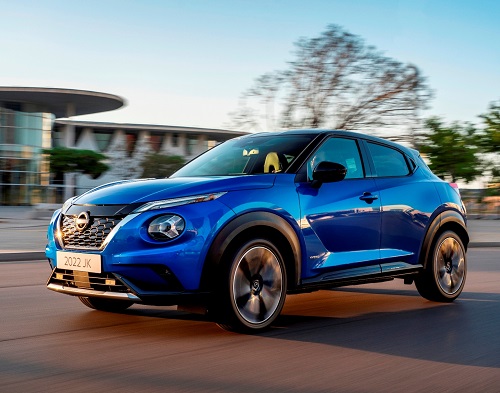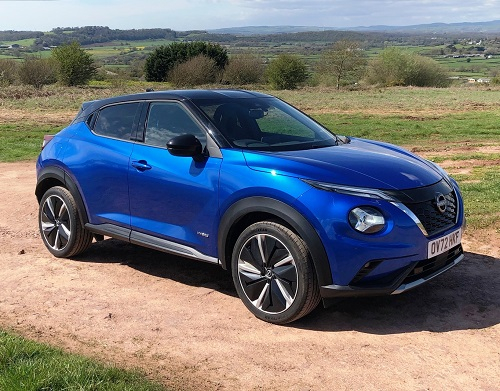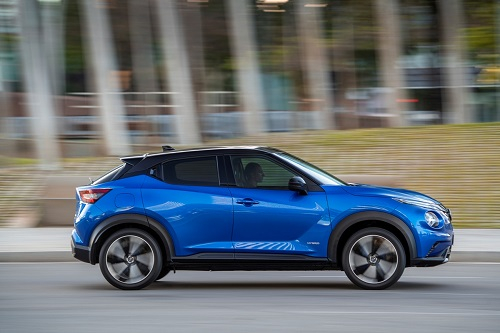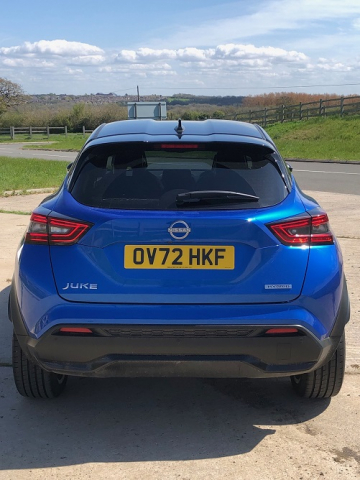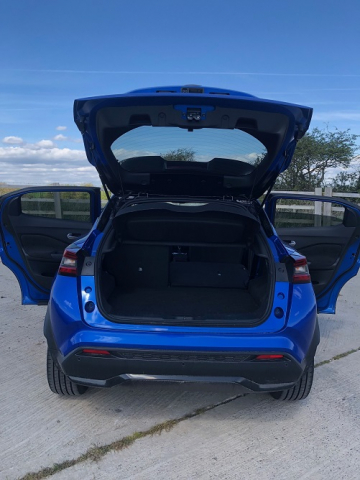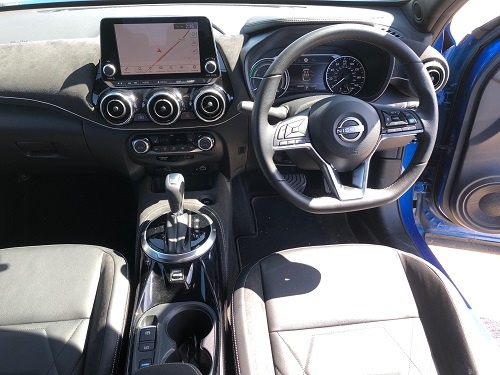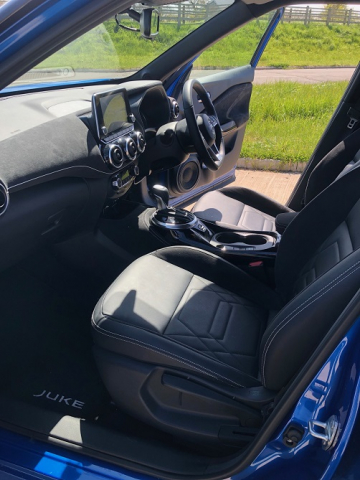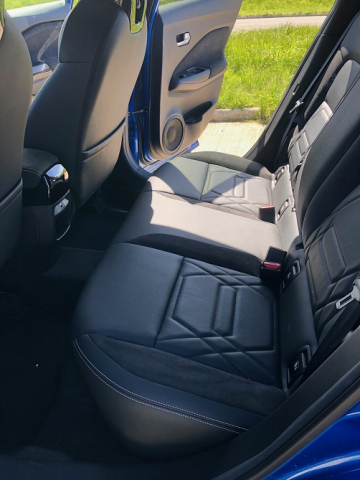The Nissan Juke has been with us for over a decade but it can still hold its own against rivals now it has been given a Hybrid powertrain for higher specification versions.
It has just picked up five-stars for safety as well so it’s not lacking where it matters for many families.
In production since 2010, the Juke crossover sits below the larger Qashqai and was intended to have a more sporting appeal than its stable-mate with which it shares powertrains but there have only been two generations of the series with the current debuting in 2019.
Over the years, the Nissan Juke has evolved into seven versions available today including the latest hybrid models launched in 2022 as N-Connecta, Tekna and our upper Tekna+ trim. The only extra on our £30,320 test car was a very tasteful two-tone pearl black over Magnetic blue paint scheme at £170. The latest model’s prices start from £20,985 and range up to £31,110.
The 1.6-litre petrol-electric Hybrid system with its auto transmission is highly sophisticated and uses the Nissan e-Pedal which permits single pedal driving and very strong retardation, ideal for congested urban use, in electric mode. It is not a plug-in hybrid and is effectively self-contained with a worry-free driving range.
It also has the Juke’s latest equipment enhancements including BOSE Personal Plus ten-speaker sound system, which is extremely good, advanced keyless system, revised rear aero- spoiler with revised front grille.
Hybrid models have a new instruments cluster with left side power gauge to display how the electric powertrain is operating and battery state. The usual speedometer and fuel gauge are on the right side with familiar warning lights.
One fascia button turns on the full ev system while the e-pedal selector is on the central console to optimise the clever electrics.
The latest Juke Tekna+ mixes their familiar and reliable 1.6 petrol engine and 36kW electric motor which require no specific driver input in normal driving and the result is a very smooth take up, modest acceleration and utterly composed motorway cruising. Depending upon how you engage the battery power and ev modes the fuel consumption can enormously vary, down to 35mpg or up to almost 75mpg on our test before it settled to just under 55mpg overall.
The normal automatic gearchanges are smooth and quiet, if not particularly quick unless in the sport mode. Then its character takes on a bit more urgency.
You can get a lot of feel through the steering and it’s well geared for parking or sweeping along rural roads while the brakes easily contain the performance and gave good power with light pressure underfoot. The electric parking brake safely held it on our regular slope.
Secondary controls were generally well placed and operated smoothly, notably the lights and wipers front or back, but we struggled to get the cruise control to work each time and it seemed really too sensitive.
The Nissan system uses the infotainment screen to operate media and navigation, phone and other settings and the displays were clear and quick to change, backed up by a display infront of the driver between the power and speedometer for more features.
Heating and ventilation was controlled through a separate system below the multi-function infotainment screen and it was straightforward, effective and had good output, directional and temperature control, backed up by four powered windows.
Oddments room was reasonable, not exceptional for a family car, with four door bins, seat-back pockets, console cubbies and bin, as well as a shallow glovebox. Behind there was a parcel shelf and the quickly expandable bootspace with 1:3 offset split had a useful underfloor compartment to maximise capacity as necessary.
Access to the boot was easy with low rear panel and decent shape to fill, an almost flat floor when the seatbacks were dropped and a fabric finish.
For driver and passengers the doors had a reasonably wide opening but those behind had to duck down to climb in with the sweeping roofline to the rear, it was easier infront. Once inside the five-seats were well shaped and supporting but legroom and headroom might be short for some behind.
Good front seat adjustment and room gave an airy feel and the side and front sightlines were very good, less so clear when reversing or for passengers to look out.
One of the most surprising features about the Juke was its very good ride for a car with just 2.64m wheelbase. The suspension really absorbed the regular bumps without any problem and bad bits of tarmac were also shrugged off before a deeper pothole was encountered and then it would jar, but not too severely.
Handling was, as a result, sure-footed and predictable, entirely safe and un-testing of a driver.
Road rumbles were modest though ever present and the engine was muted as well until really pushed towards its upper rev limit.
You can cover ground fairly quietly, respectably quickly and without drama, but most of all with economy of fuel if you play about with the ev settings.
The Juke harks back over two decades but the introduction of the Hybrid powertrain to this stylish popular compact crossover means it can hold its own against more modern rivals and save you quite a bit of money in the deal.
FAST FACTS
Nissan Juke Hybrid 2WD Tekna+
Price: £30,320
Mechanical: 143ps 1.6L petrol-electric, 6 speed auto
Max Speed: 103 mph
0-62mph: 10.1 secs
Combined MPG: 54.5 on test
Insurance Group: 15
CO2 emissions: 114gkm
Tax costs: Bik rating27%, VED £200FY, £170SR
Warranty: 3yrs/ 60,000 miles mechanical/ 5yrs ev powertrain
Size: L4.22m, W1.99m, H1.60m
Bootspace: 354 to 1134 litres
Kerbweight: 1333kg
For: Very comfortable, easy to drive, smooth, well equipped and economical
Against: Tight on room in the rear seats, poor rear visibility, modest performance, heavy bonnet to lift for checking fluid levels. By Robin Roberts Miles Better News Agency
